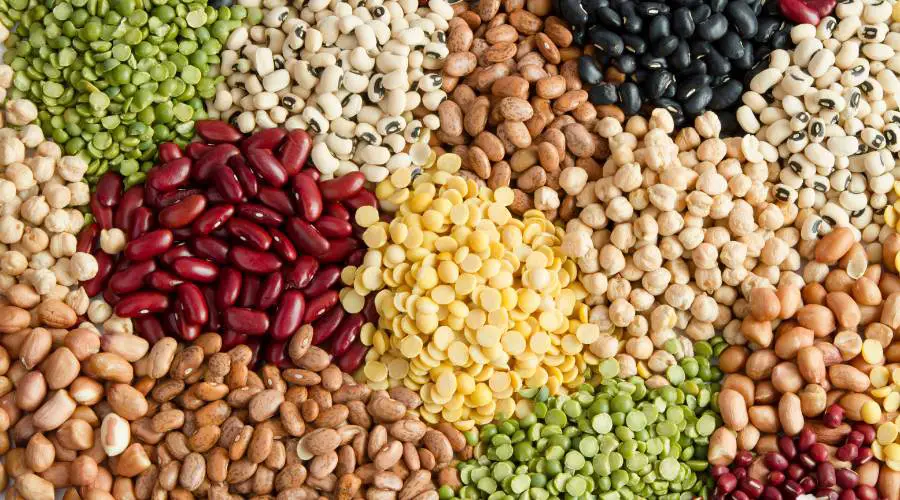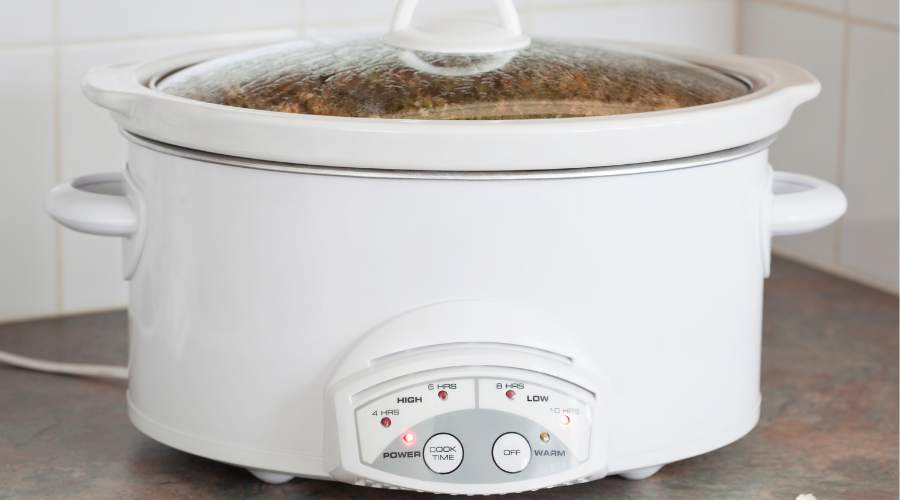As a food lover and an avid home cook, I understand the importance of having a well-stocked pantry. Having a variety of ingredients on hand, including dried beans, can make meal planning and preparation so much easier.
However, storing beans for long term use can be a challenge. That’s why I’ve done extensive research and tested various methods to find the best way to keep beans fresh and ready for use. So how can you store dried beans for a long time?
In this article, I’ll share my findings on the shelf life of dry and canned beans, the best containers to store them in, and tips for using and cooking with stored beans. Whether you’re a seasoned food storage expert or just starting to build your pantry, you’ll find valuable information in this article to help you store beans for long term use.
What are Beans?
Beans are a type of legume (seeds) that are commonly used in cooking and are a staple food in many cultures. They are a rich source of protein, fiber, and minerals, making them a great addition to a healthy diet.
According to the USDA, “Beans are a low-fat, cholesterol-free food that are high in protein, fiber, complex carbohydrates, iron, and other essential nutrients.”
Beans come in many varieties, such as black, kidney, navy, pinto, and lima beans. Each type of bean has its own unique flavor and texture, making them a versatile ingredient in many dishes. Whether you use them as a base for a hearty soup, in a colorful salad, or as a side dish, beans are a great choice for adding nutrition and flavor to your meals.

Shelf Life of Dry Beans
Dry beans have a longer shelf life than their canned counterparts, but they do have a shelf life nonetheless. Like other dried foods, knowing the shelf life of dry beans will help you determine the best time to use them, so they remain fresh and flavorful.
See in detail the shelf life of dry beans including pinto, black, kidney, and more.
The shelf life of dry beans can vary depending on a few factors such as the type of bean, the storage conditions, and the freshness of the beans when purchased. In its original packaging, dry beans can last up to 1 year. However, if stored in an airtight container or mylar bags, in a cool and dry place with oxygen absorbers they can last for 10+ years, however may start losing nutrients somewhere around 3 years or so.
How to tell if stored beans have gone bad?
There are a few signs that dried beans have gone bad which include:
- Appearance: If the beans are discolored, shriveled, or have any signs of mold, they have gone bad.
- Smell: If the dried beans have a musty or rancid odor, they are no longer safe to use.
- Taste: If the beans have a sour or bitter taste, they have gone bad.
- Texture: If the beans are hard or brittle, they may have been stored for too long and have lost their freshness.
It is best to check for these signs before using any of your stored beans in your cooking, because consuming bad beans can lead to food poisoning. If in doubt, it is best to discard the dried beans and purchase a fresh batch.
How to Store Beans (Dry) in Long Term Food Storage
The best way to store beans long-term is by using the right containers, storing it in the correct place, labeling and dating the packaging, and regularly checking it for spoilage.
Airtight Containers
One of the most important steps in storing dry beans for long term food storage is to choose and use an airtight container. Mylar bags, food-grade buckets, glass jars, or plastic containers with tight-fitting lids work well. Avoid using containers that are porous, as this can lead to moisture buildup and spoilage.
Also consider putting in some bay leaves or other insect repelling herbs that can stay in your beans to repel bugs and keep them from going bad.
Cool and Dry Place
Store the container of dry beans in a cool and dry place, such as a pantry or cupboard. Avoid storing them near sources of heat or moisture, as these can cause the beans to deteriorate faster.
Here are several ideas for cool, dry places to store rice:
- Pantry: A pantry is a great place to store rice. Make sure to store the rice in an airtight container to protect it from moisture and light.
- Cupboard: A cupboard is another good option for storing rice. Choose a cupboard that is away from heat sources and moisture to keep the rice fresh.
- Basement: If you have a basement, this can be a great place to store rice. Basements are often cooler and drier than the rest of your home, making them ideal for long-term food storage.
- Cold Storage Room: If you have a dedicated cold storage room, this is the ideal place to store rice. This type of room is specifically designed to maintain a cool temperature and low humidity, making it perfect for long-term bean storage.
- Root Cellar: A root cellar is a cool, damp storage area typically used for root vegetables and other food items. Rice can also be stored in a root cellar, but make sure to keep it in an airtight container to protect it from moisture.
- Crawl Space: If you have a crawl space that is well-ventilated and dry, this can also be a good place to store rice. Make sure to keep the rice in an airtight container and label it with the date of purchase.
- Garage: If you have a garage that is cool and dry, this can also be a good place to store rice. Make sure to keep the rice in an airtight container and label it with the date of purchase.
Remember, the key to successful long-term food storage is to choose a cool, dry place that is away from heat sources and moisture. This will help to ensure that your rice stays fresh and edible for as long as possible.

Label and Date Packaging
Label the container with the type of bean and the date of purchase. This will help you keep track of the age of your beans and know when it is time to use them.
Check Regularly
Check the beans regularly for any signs of spoilage, such as mold, discoloration, or musty odor. If you notice any of these signs, discard the beans and replace them with a fresh batch.
By following these simple steps, you can ensure that your dry bean is stored properly and remains fresh for long term use.
Also, see complete guides on how to store these common types of food storage items:
Best Storage Containers for Dried Beans
The best containers for storing beans long-term all have one thing in common, they are able to be sealed airtight in order to keep a low oxygen environment. Here are several container options:
Mylar Bags
Mylar bags are a great option for storing dry beans in your long-term storage. They are made of a durable material that is designed to keep out moisture and light, which can cause spoilage. They are also convenient and come in various sizes such as a gallon mylar bag. You can also add oxygen absorbers to the bag to further extend the shelf life of the beans.
Fill the mylar bag with dry beans, leaving enough room for the beans to expand. Add an oxygen absorber to the bag, then seal it using a heat sealer or an iron. Store the bags in a cool, dry place, such as a pantry or cupboard.
Oxygen Absorber
Oxygen absorbers are small packets that you can add to your airtight container. They help to remove the oxygen or air from the container, which can cause spoilage. Simply, they help dry foods last longer.
See how to correctly use oxygen absorbers in your dry food storage.
When using oxygen absorbers, place the absorbers in the bottom of your mylar bag, food-grade bucket, or other container before adding the dry beans. Fill the container with the beans, leaving enough room for the beans to expand. Seal the container with a tight-fitting lid or heat seal and store it in a cool, dry place.
Food-Grade Buckets
Food-grade buckets are another great option for storing bulk dry beans. They are made of a durable plastic material that is designed to keep out moisture and light. You can store the rice in mylar bags before placing it in the bucket for further protection but is up to your own personal preference.
Fill the food-grade bucket with bulk dry beans, leaving enough room for the beans to expand. Seal the bucket with a tight-fitting lid and store it in a cool, dry place. You can also add oxygen absorbers to the bucket to extend the shelf life of the beans.
Best Food-Grade Bucket
Food-grade,
BPA-free,
Gamma screw-on lids are included making it easy to access
Also, consider these mylar bags (see on Amazon) oxygen absorbers are included. We have used both of these products and have found them to work well together.
Glass Jars
Glass jars with tight-fitting lids are also a good option for storing dry beans. They are non-reactive and do not leach any harmful chemicals into your food. Just make sure to choose a jar that is the right size for your needs and that is made of thick glass to prevent breakage.
Plastic Containers
Other types of plastic containers, such as BPA-free plastic containers or Tupperware, can also be used to store dry beans. Just make sure to choose containers that have tight-fitting lids and that are made of a durable, food-grade material.
Regardless of which option you choose, make sure to label the container with the type of bean and the date of purchase. This will help you keep track of the age of your beans and know when it is time to use them. Check the beans regularly for any signs of spoilage, such as mold, discoloration, or musty odor. If you notice any of these signs, discard the beans and replace them with a fresh batch.

How to Store Opened and Unopened Canned Beans
Canned beans are a convenient and easy way to add protein to your meals. If you have opened a can of beans, or if you have unopened cans that you want to store for later use, it’s important to follow a few simple guidelines to ensure their quality and safety.
Unopened Canned Beans
Here are a few tips on how to store unopened cans of beans:
- Store in a cool, dry place: Canned beans should be stored in a cool, dry place, away from heat sources and direct sunlight. The ideal temperature range for stored canned goods is between 50°F and 70°F.
- Avoid dampness: Moisture can cause the cans to rust and spoil the beans inside. Avoid storing canned beans in damp areas, such as near a sink or in the basement.
- Store in the original packaging: Keep the unopened canned beans in the original packaging until you are ready to use them. This helps to protect the cans from damage and keeps the beans fresh.
Opened Canned Beans
Here are a few tips on how to store opened cans of beans:
- Transfer to an airtight container: If you have opened a can of beans, transfer the beans to an airtight container. This will help to keep the beans fresh and prevent them from absorbing unwanted flavors or odors.
- Label the container: Label the container with the date that you opened the can of beans. This will help you to keep track of how long the beans have been stored and ensure that you use them before they go bad.
- Refrigerate promptly: Once you have transferred the opened can of beans to an airtight container, refrigerate them promptly. Beans stored in the refrigerator should be consumed within 5-7 days.
Storing opened and unopened canned beans is easy if you follow these simple guidelines. By storing your canned beans in a cool, dry place and transferring opened cans to an airtight container, you can help to keep your beans fresh and safe to eat.
Tips for Using and Cooking with Stored Dried Beans
Cooking with and using stored dried beans in your recipes can be a nutritious and delicious addition to your meals. However, there are a few tips that you should follow to ensure that your beans are cooked perfectly every time.
Sort and rinse the beans: Before cooking, sort through your stored dried beans and remove any small stones or debris. Rinse the beans under cold running water and drain.
Soak the beans: Soaking the beans before cooking will help to reduce cooking time and make the beans more tender. There are two methods for soaking: overnight soaking and quick soaking. Choose the method that works best for your schedule.
Add flavor: Add herbs, spices, or aromatics to the cooking water to add flavor to your beans. Some popular options include bay leaves, garlic, onions, and cumin.

Cook low and slow: Cooking dried beans low and slow will help to ensure that they are tender and fully cooked. Do not add salt to the cooking water until the beans are fully cooked, as salt can cause the skins to become tough.
Store cooked beans: Store cooked beans in an airtight container in the refrigerator. Cooked beans will keep for up to five days in the refrigerator.
Using and cooking with your stored dried beans can be a great addition to many different recipes. By following these tips, you can ensure that your beans are cooked perfectly every time. So go ahead and enjoy the many health benefits of this versatile food.
In conclusion, beans are a versatile and nutritious food that can be stored long-term for later use. Understanding the shelf life of dry beans and how to store them properly can help ensure that they remain fresh and safe to eat for extended periods of time.
Using airtight containers, such as mylar bags or food-grade buckets, can help prevent spoilage and extend the shelf life of dried beans. Canned beans can also be stored, either opened or unopened, in a cool, dark place to help maintain their freshness.
When it comes time to cook with your stored beans, remember to sort and rinse them, soak them, add flavor to the cooking water, and cook low and slow for best results. With these tips, you can enjoy the many health benefits of beans for years to come.


